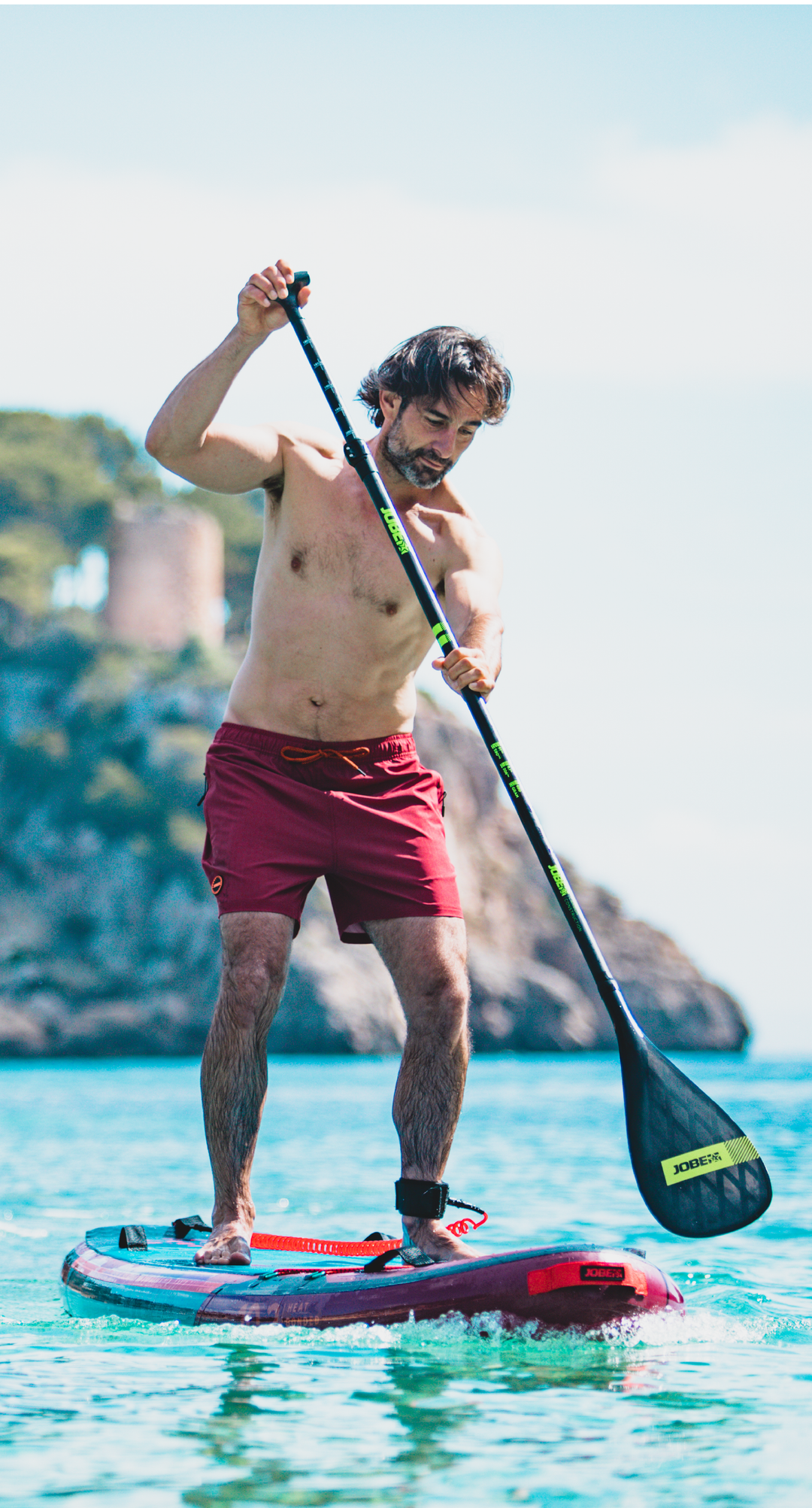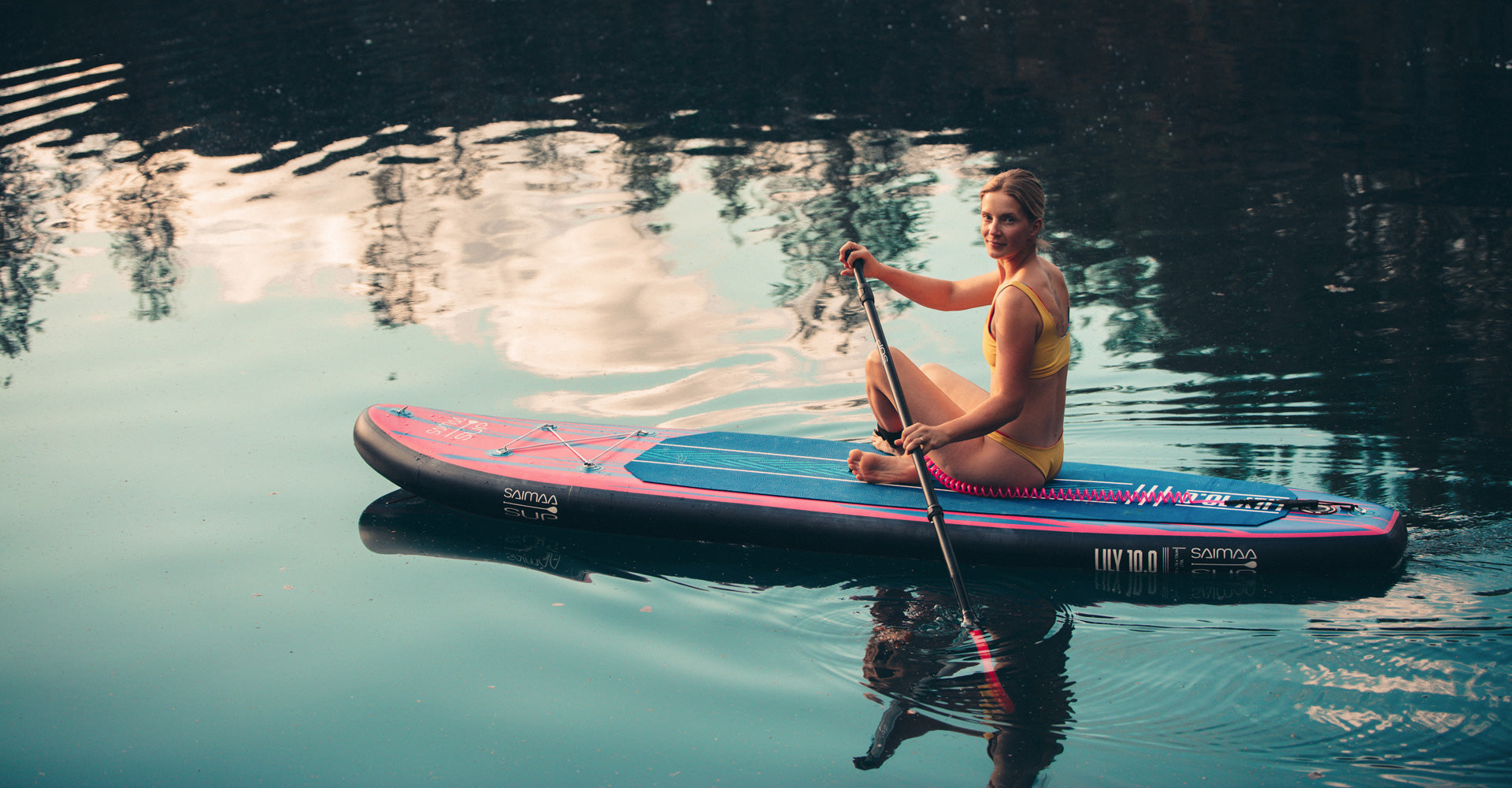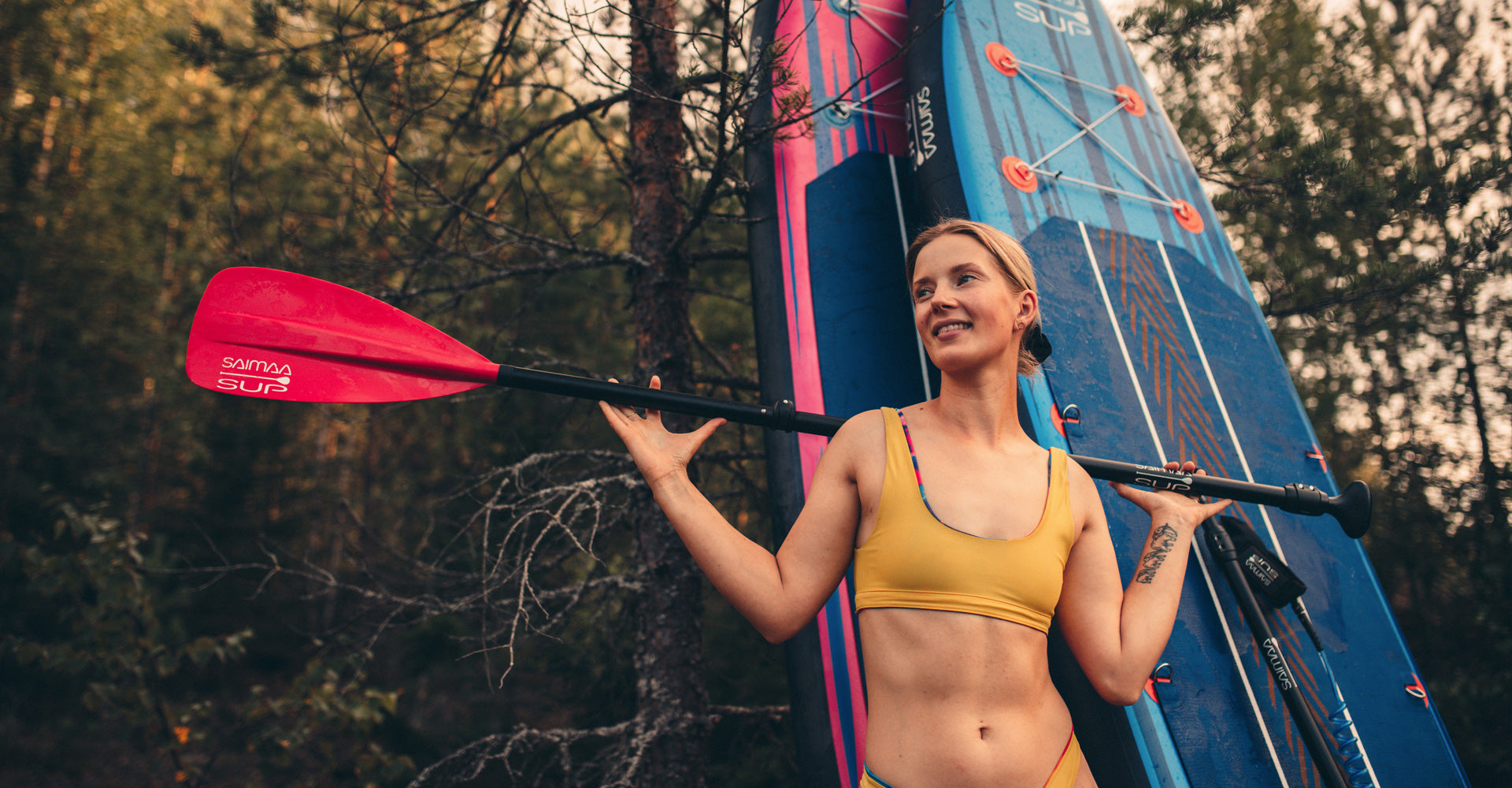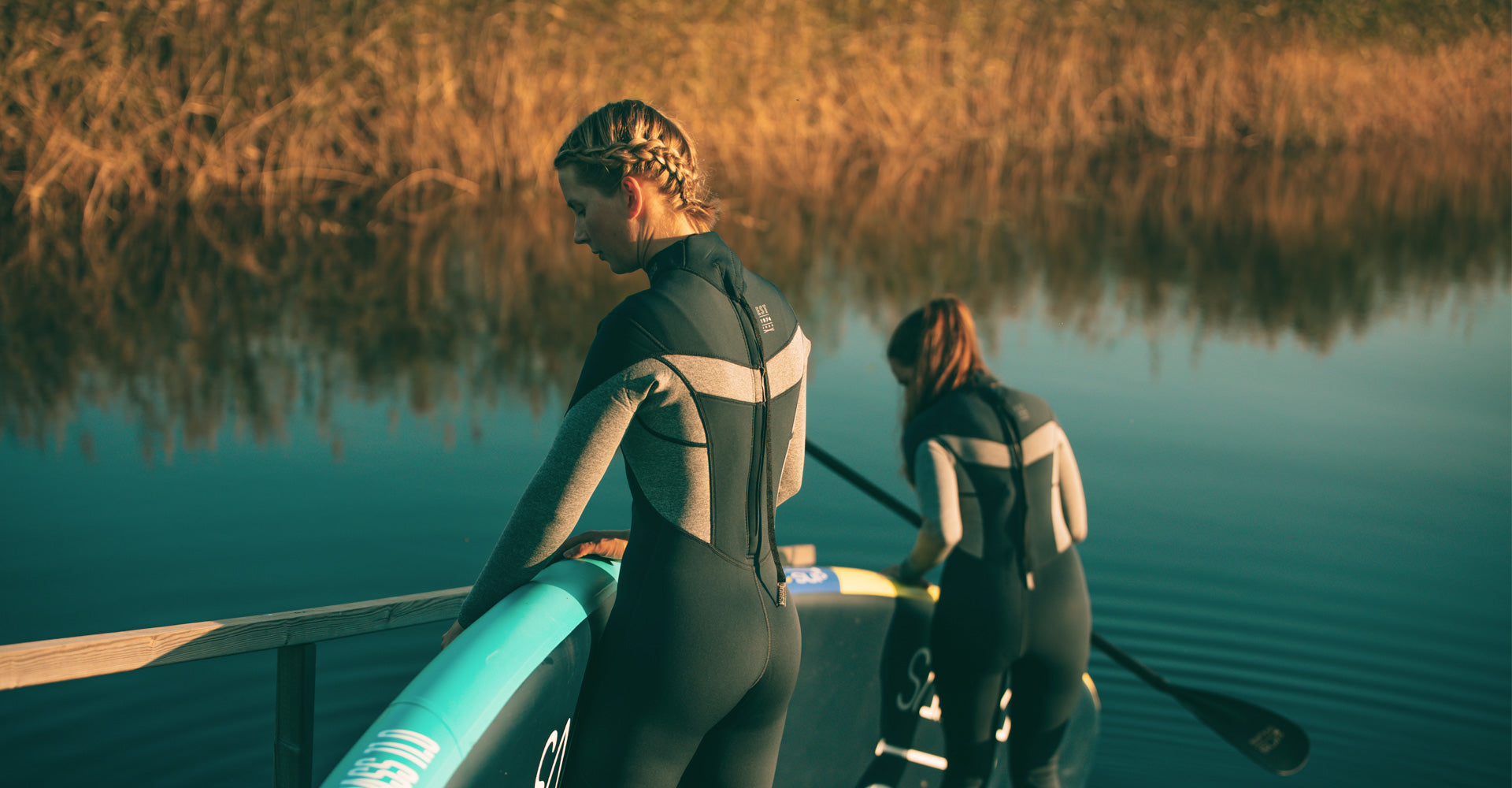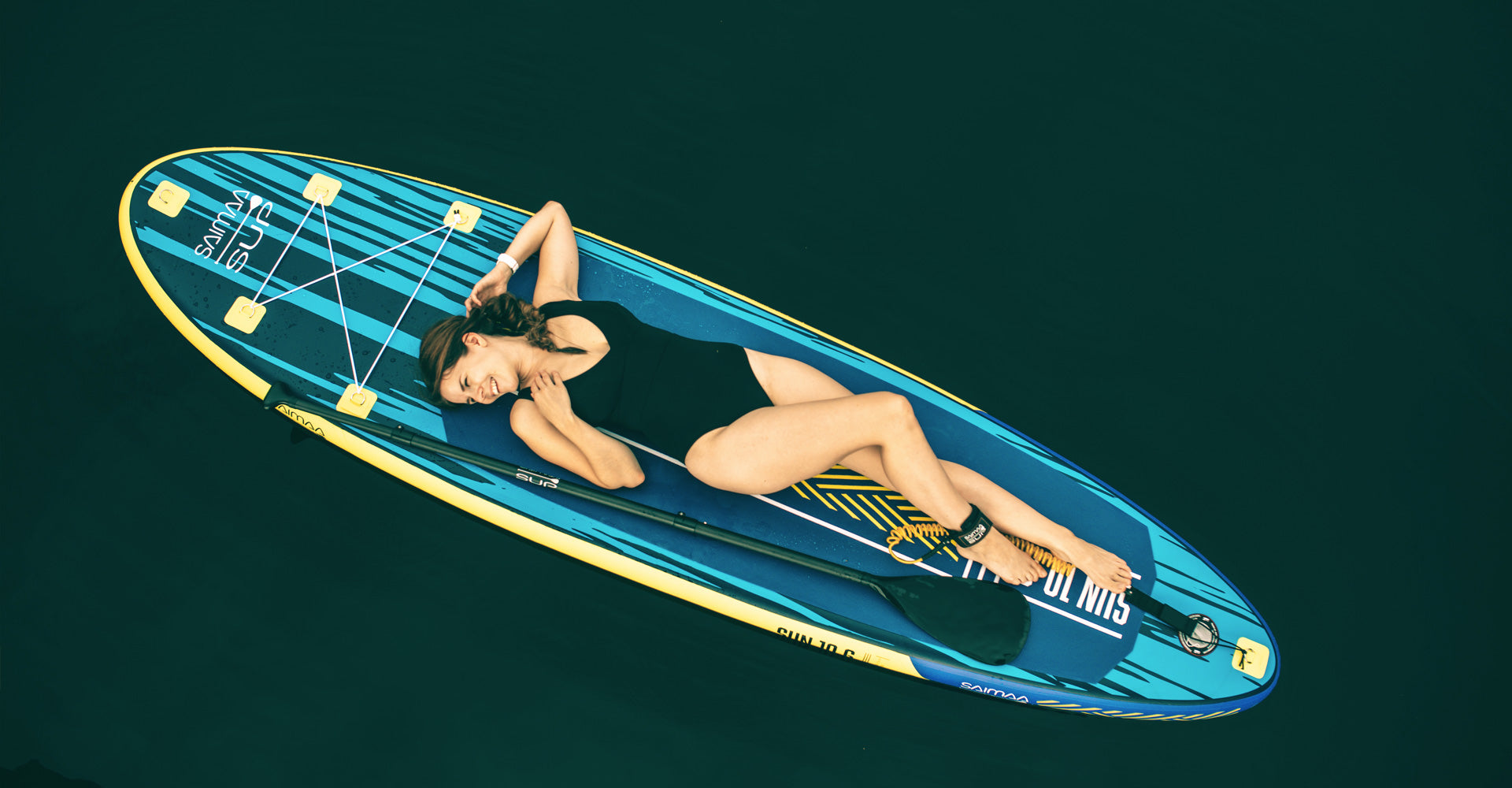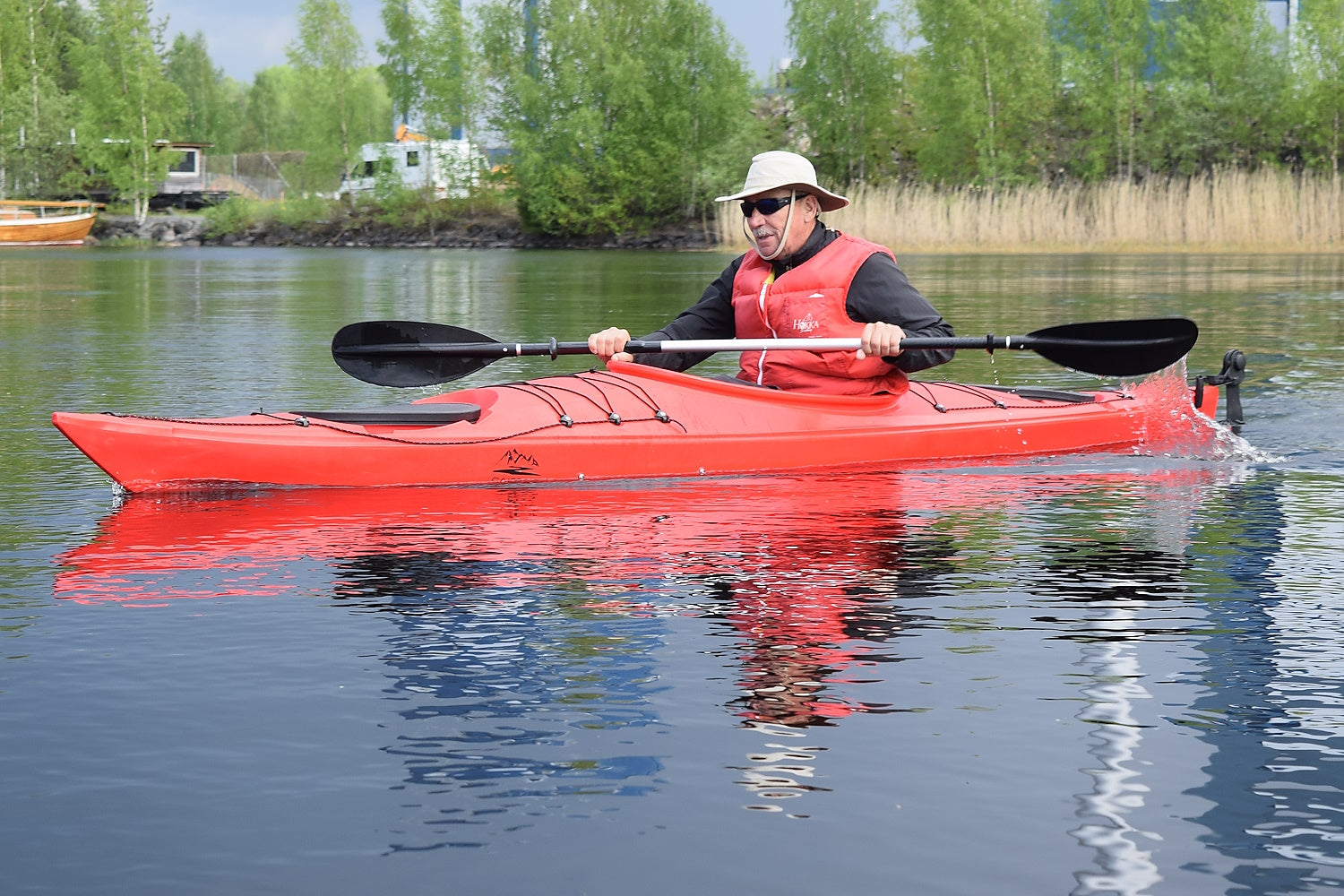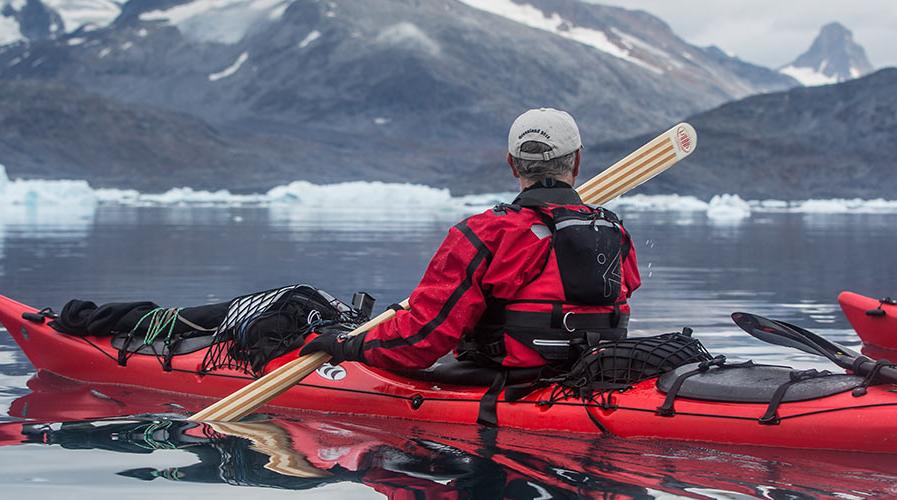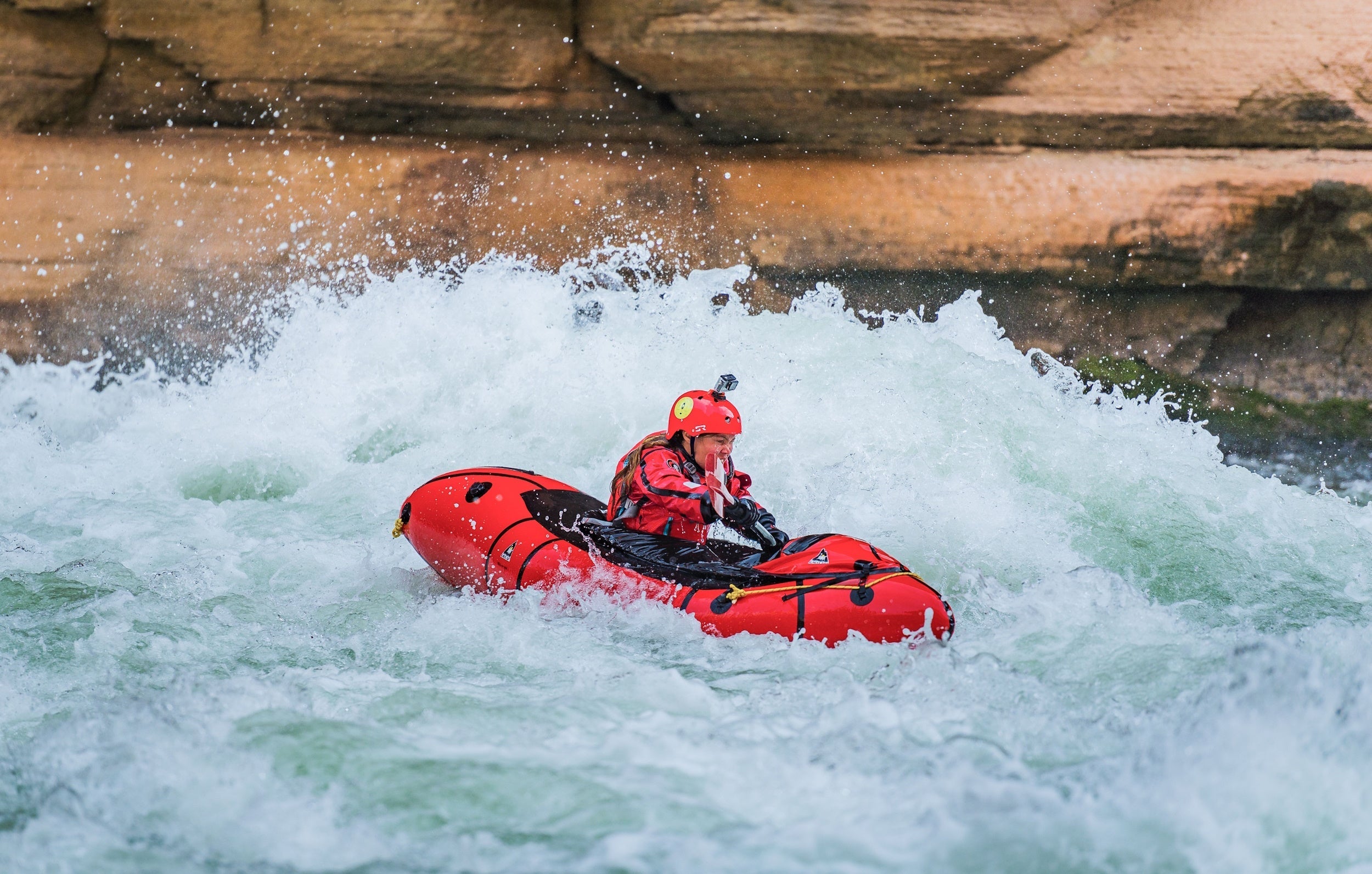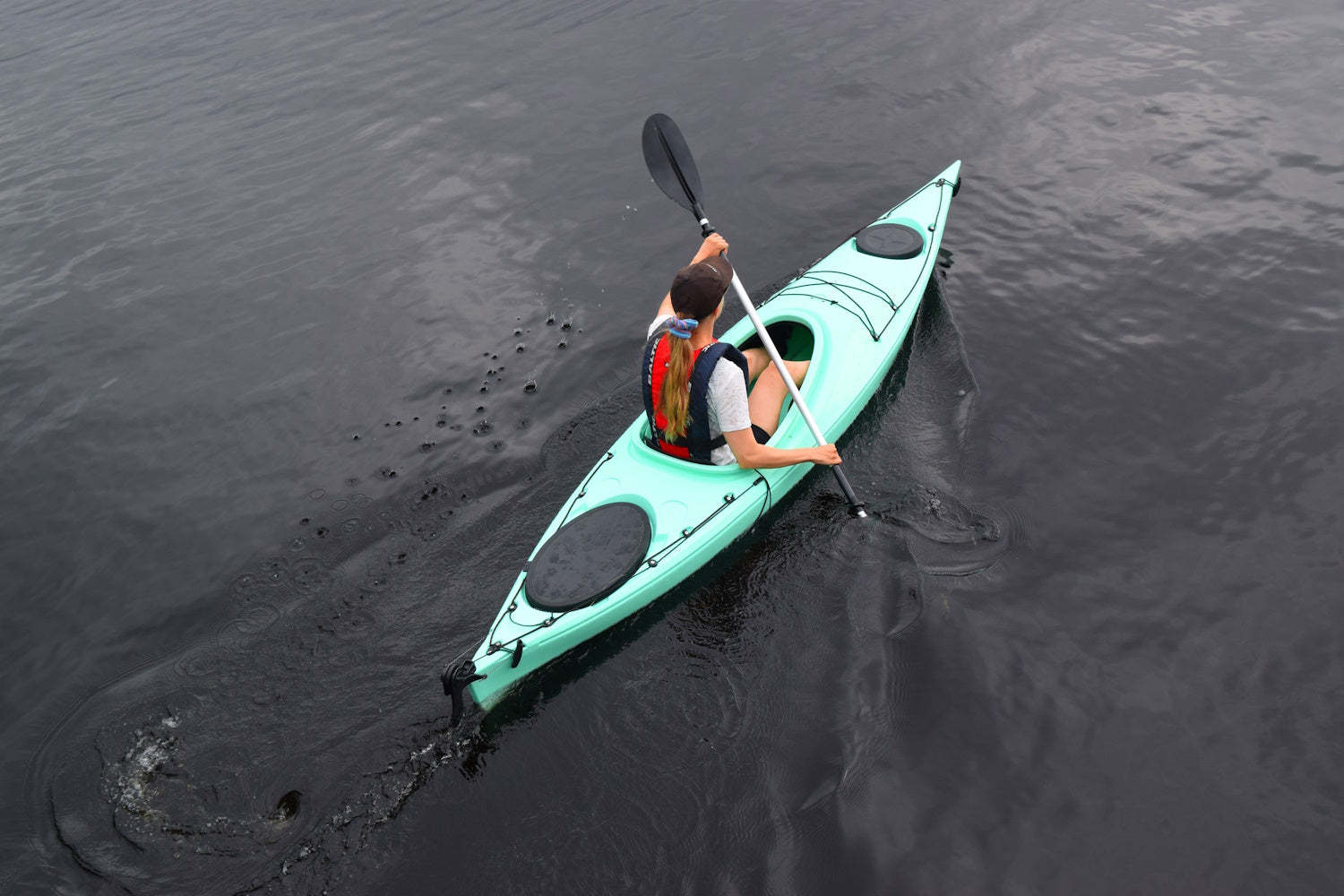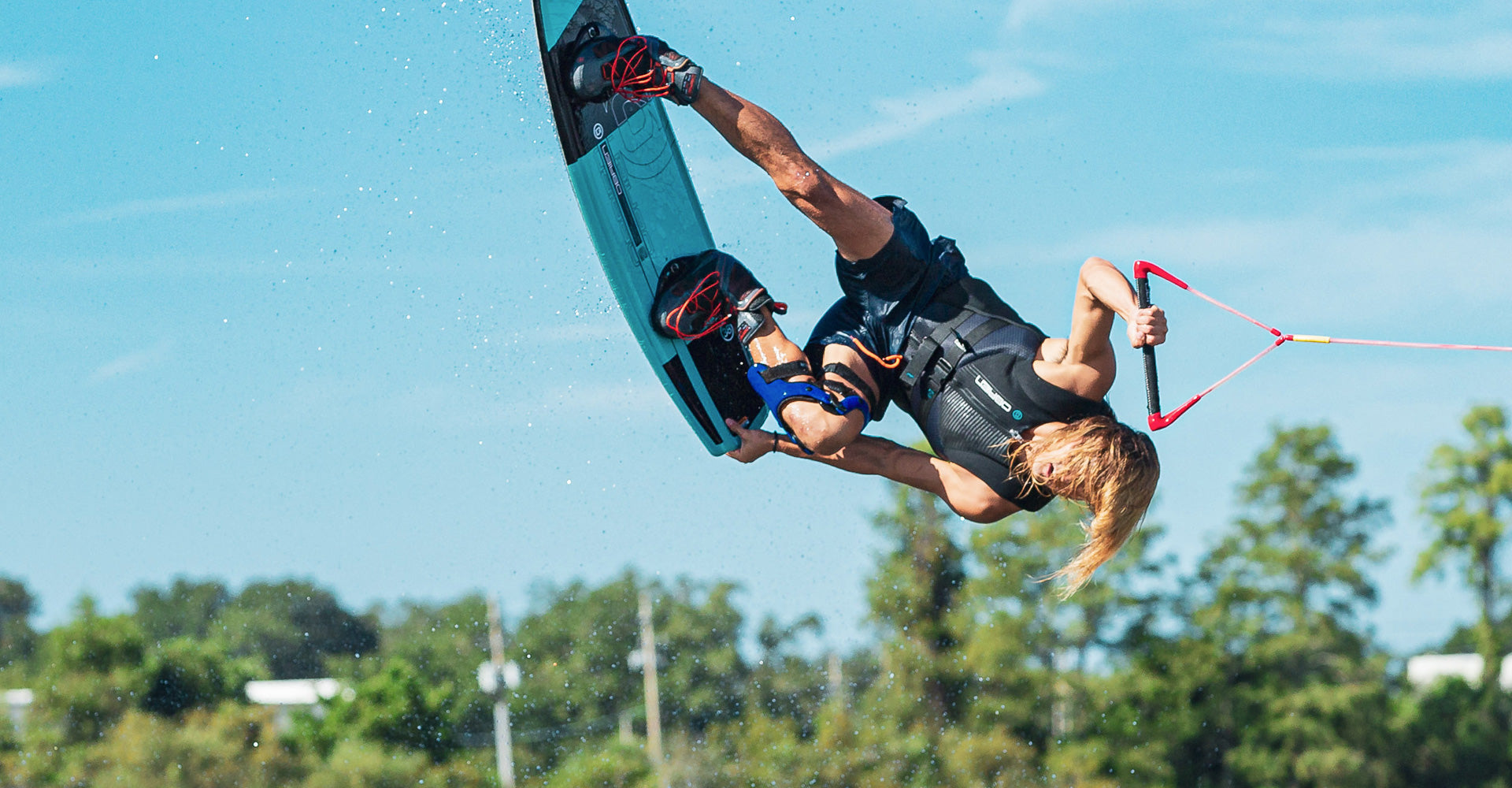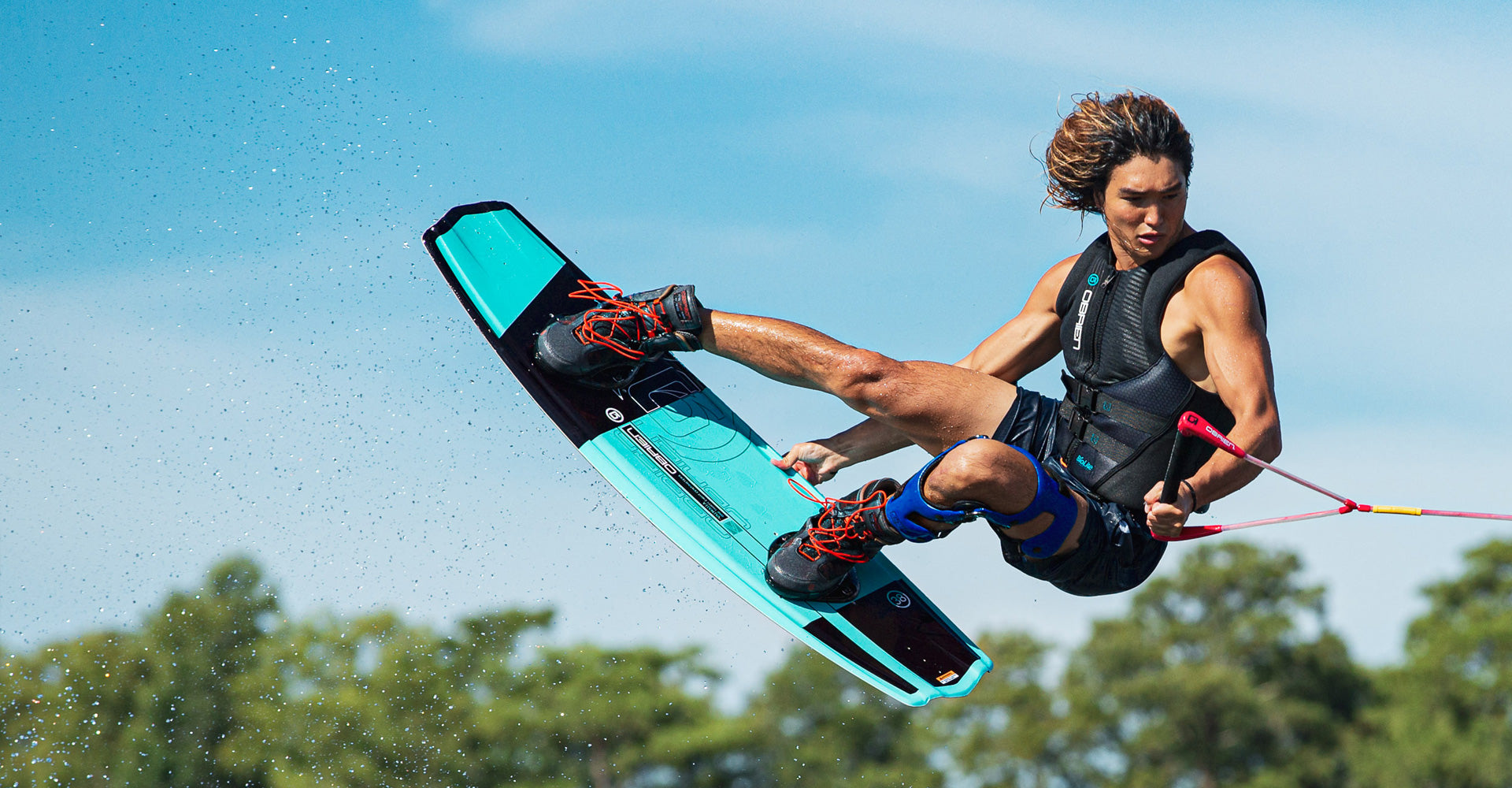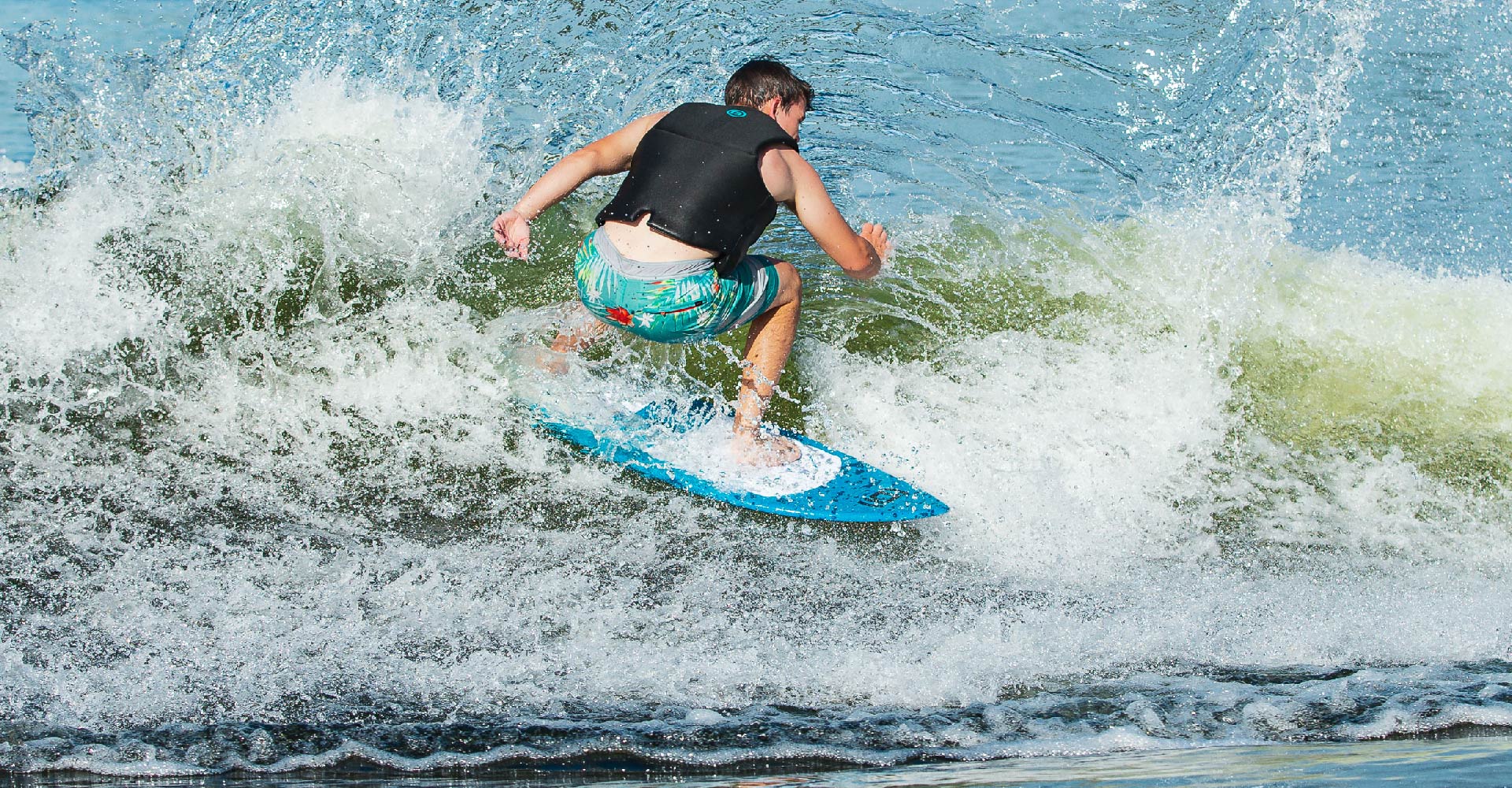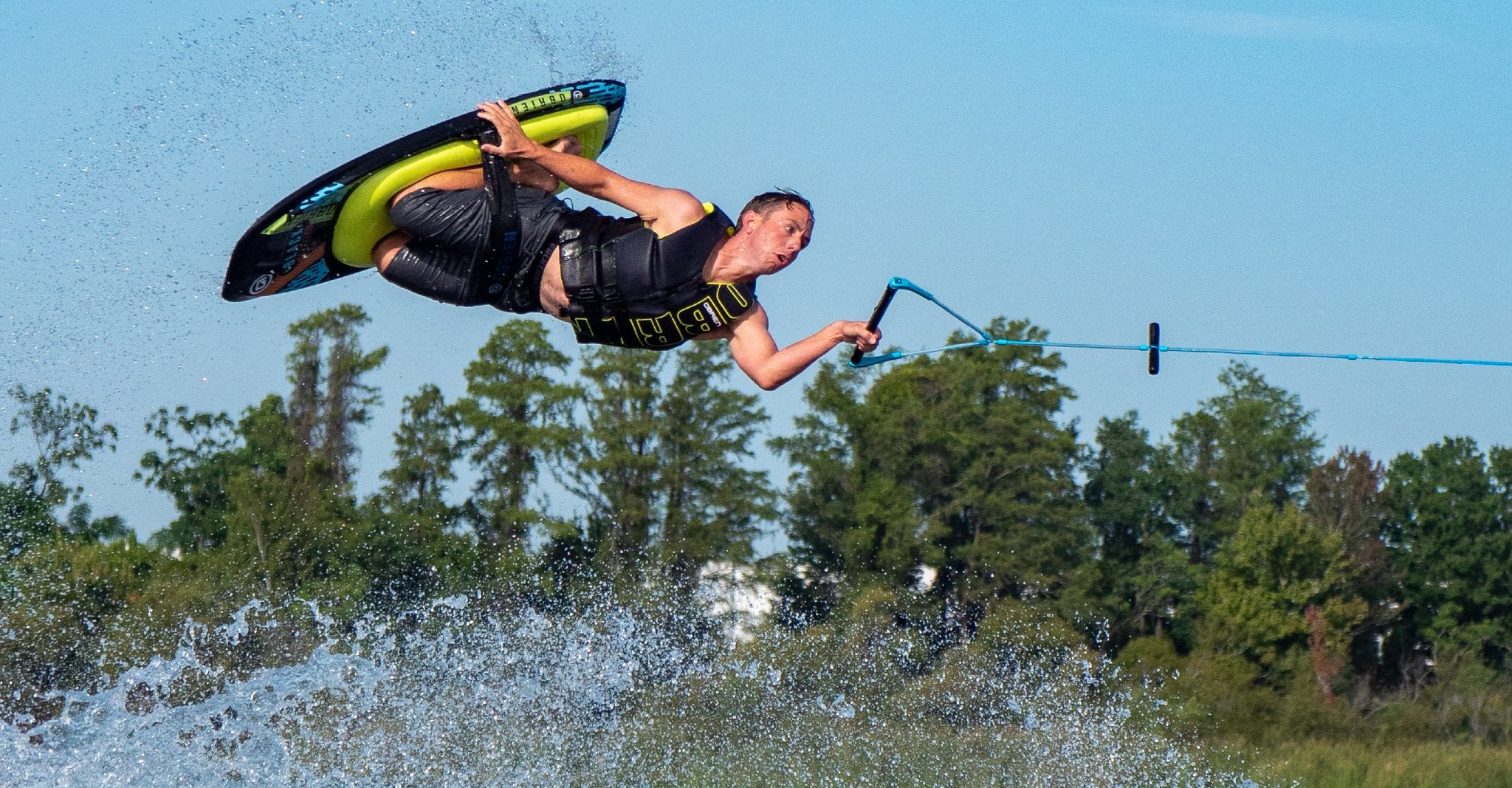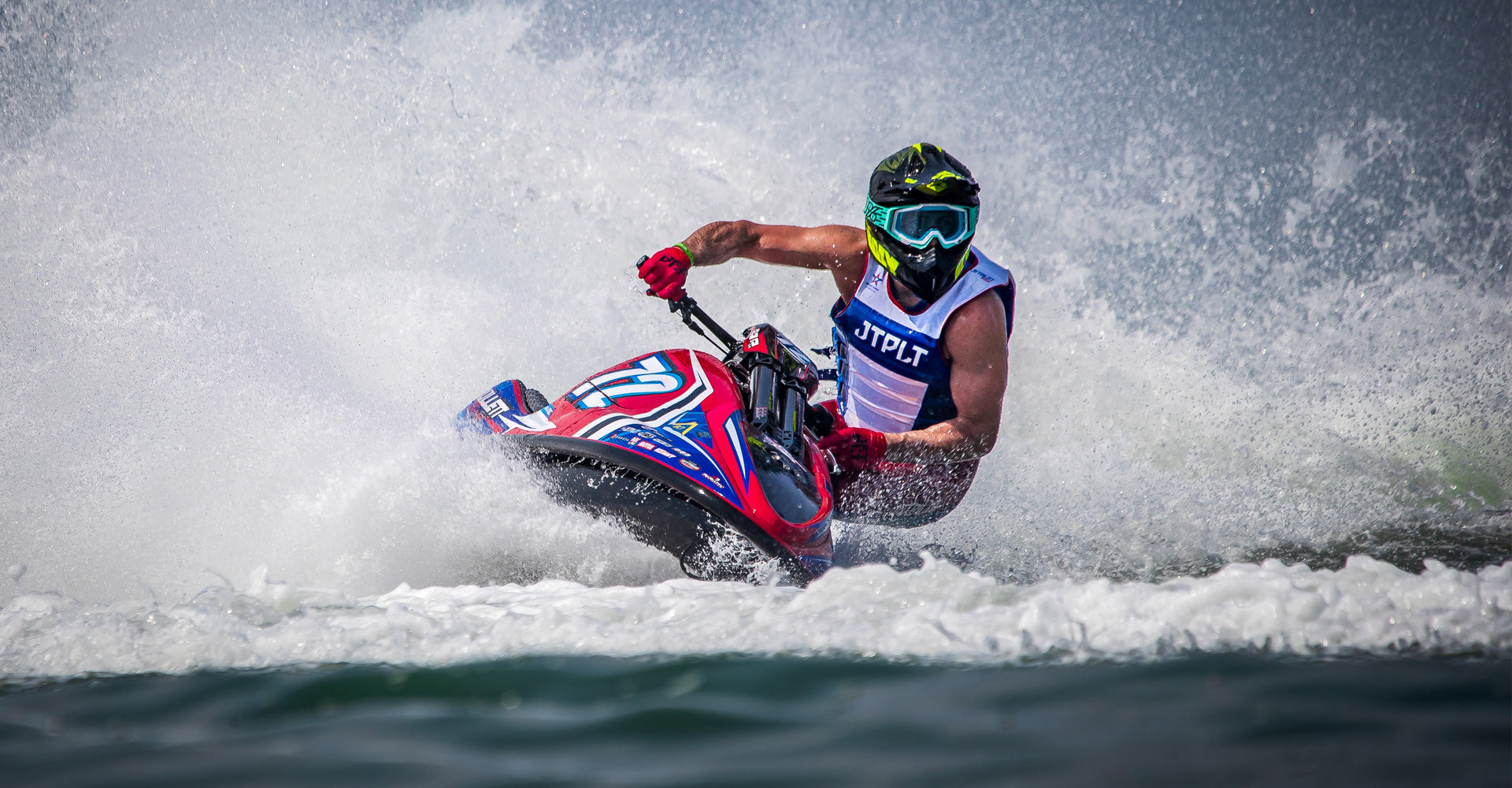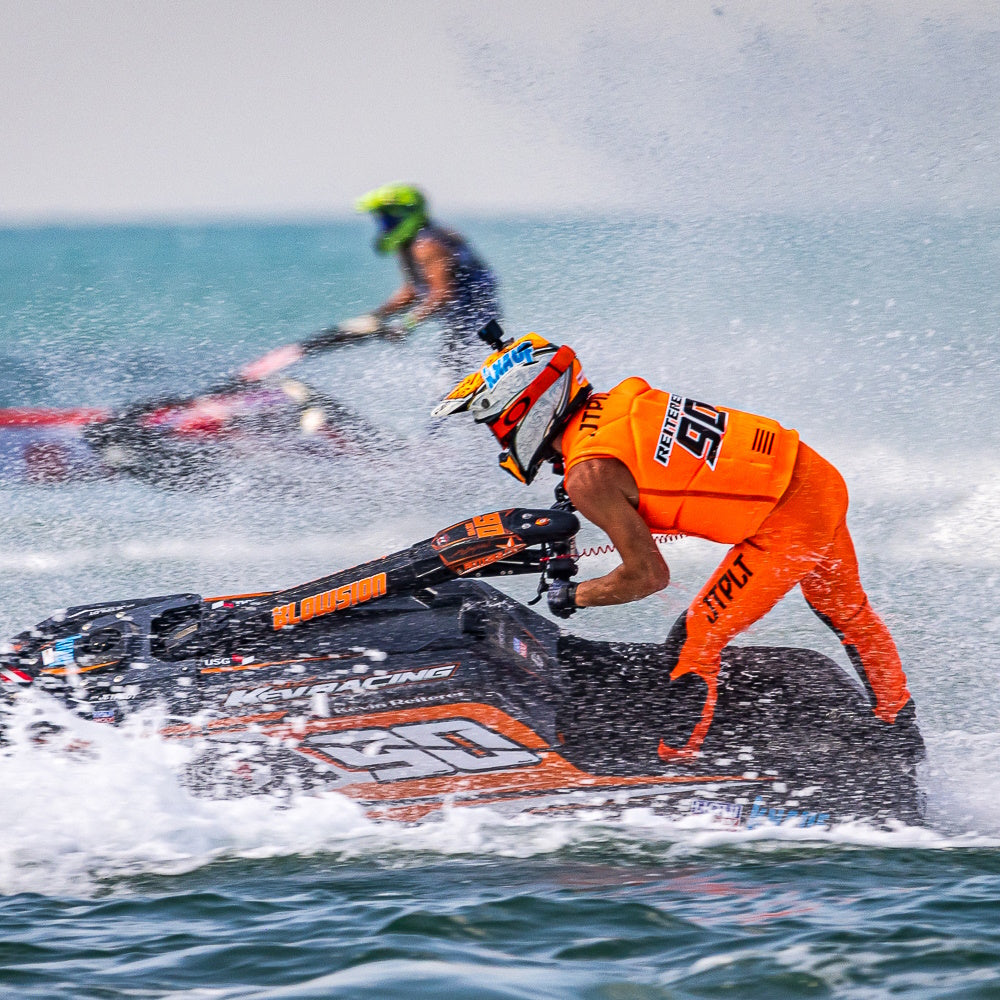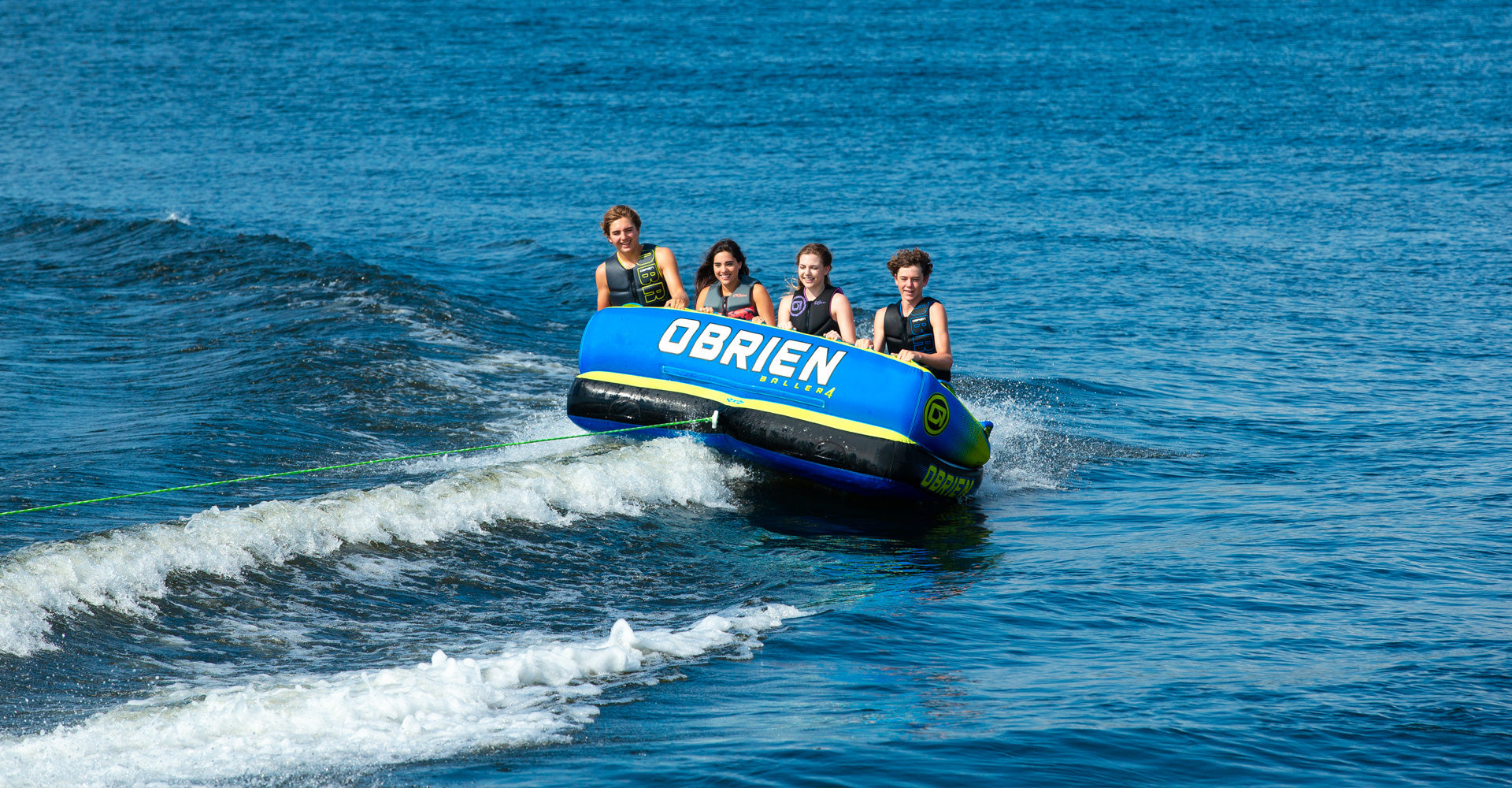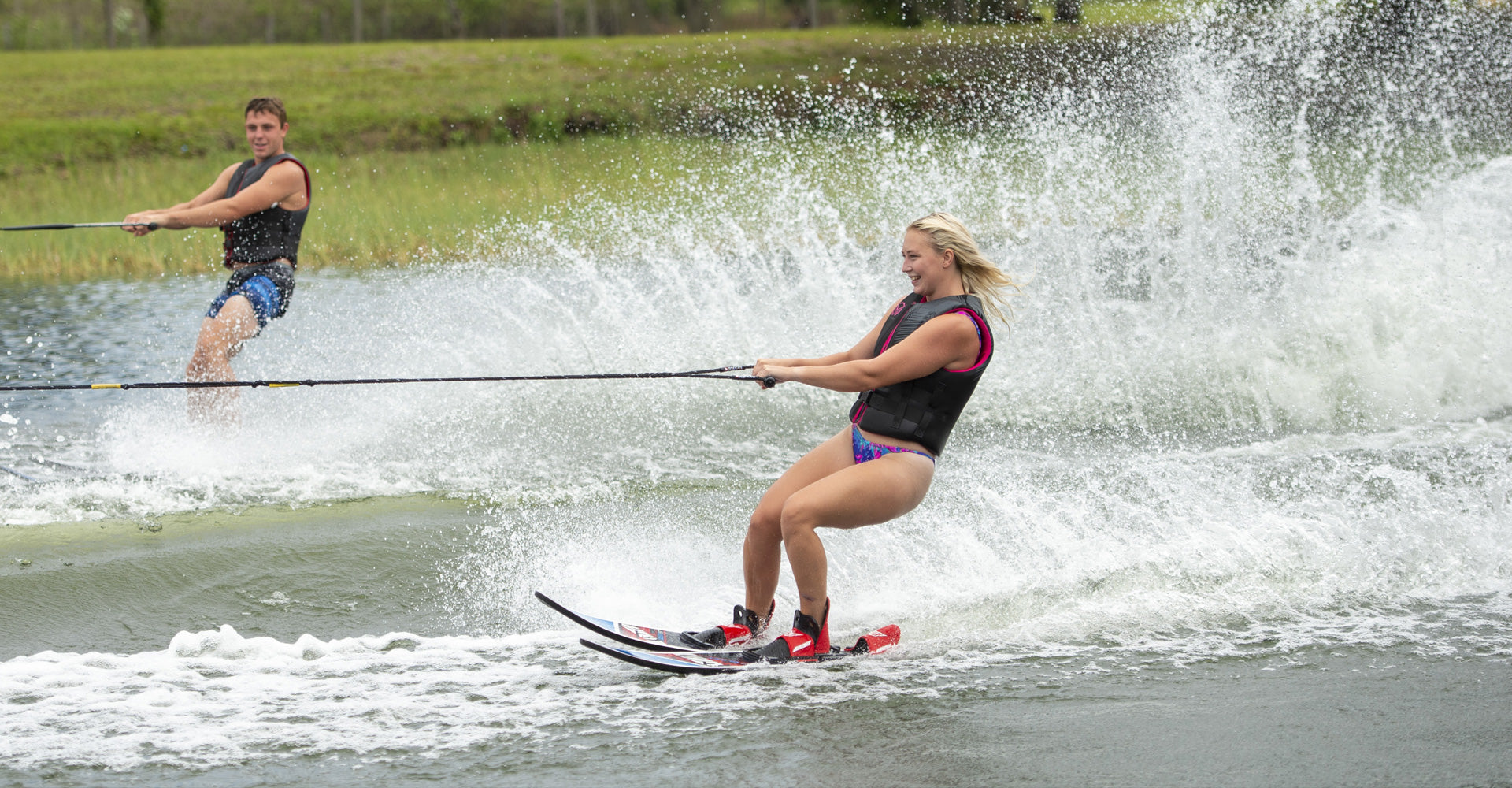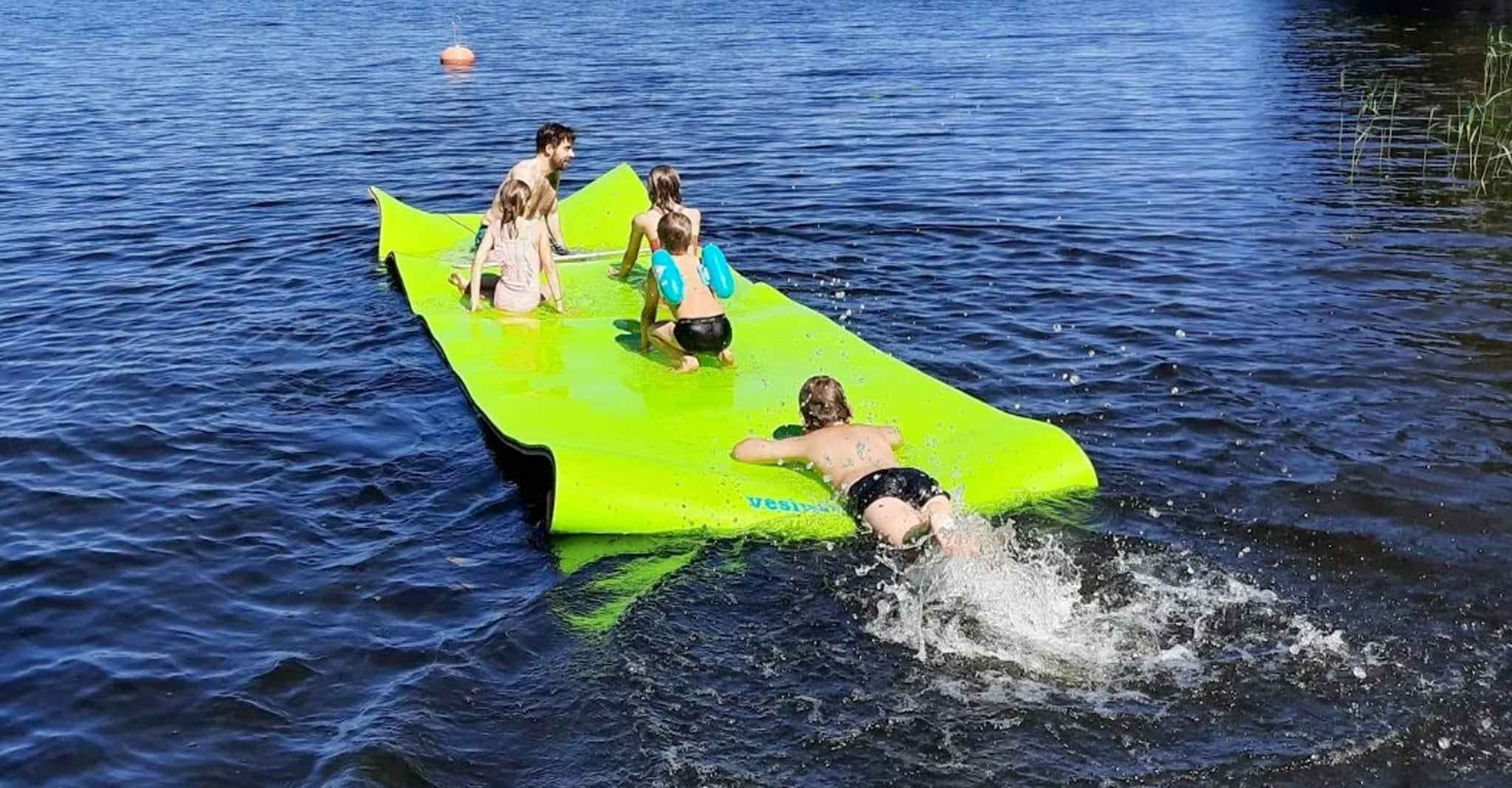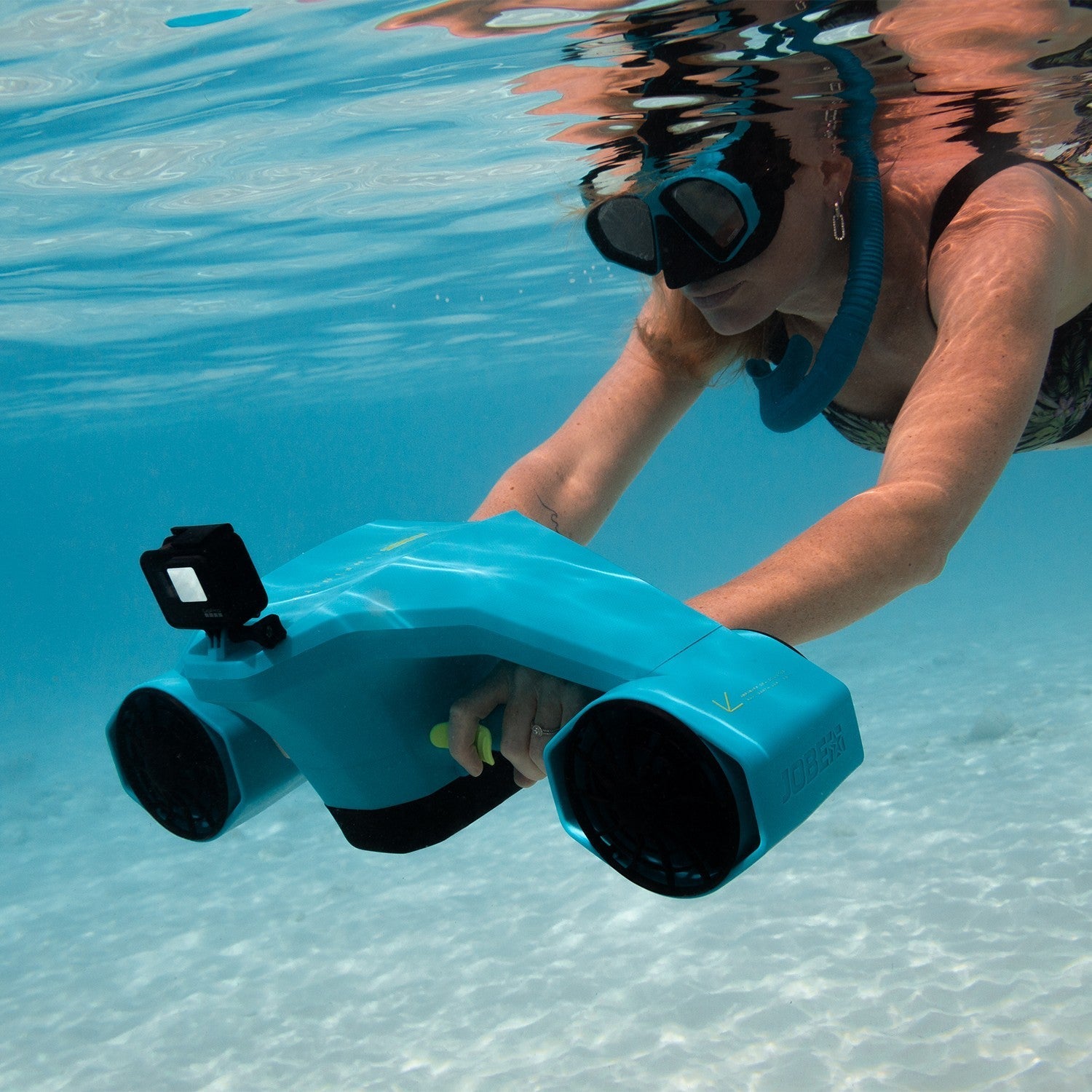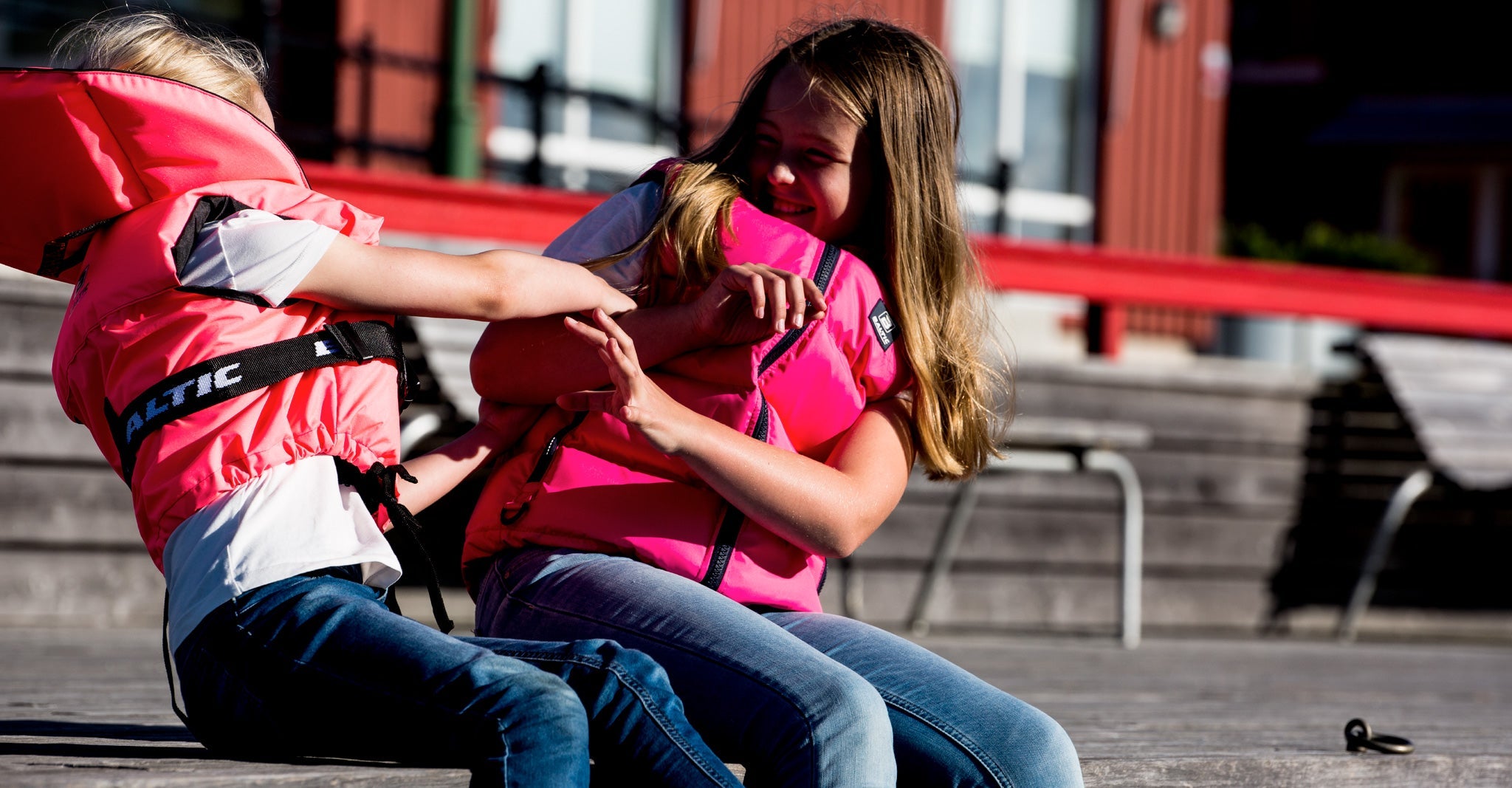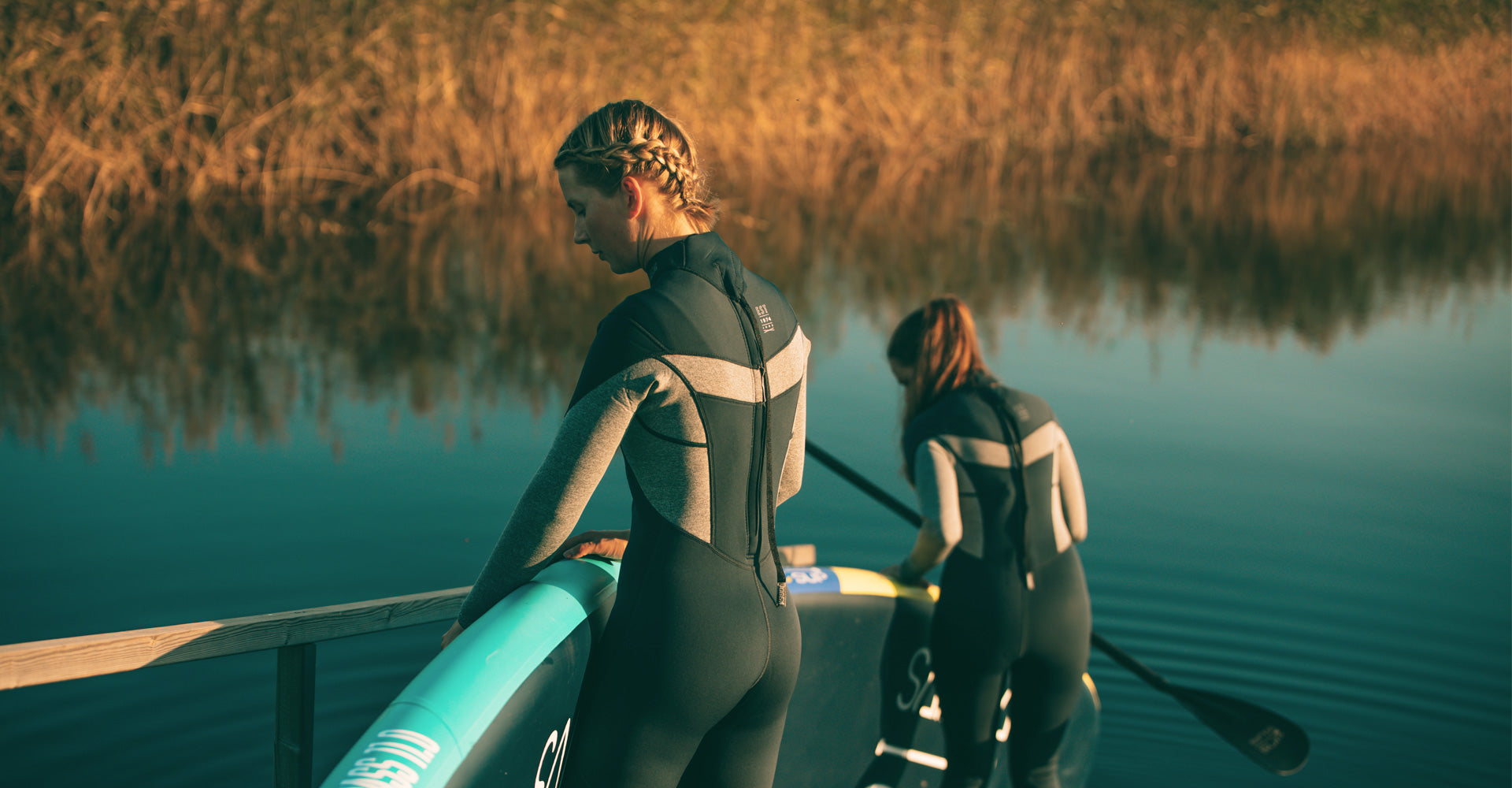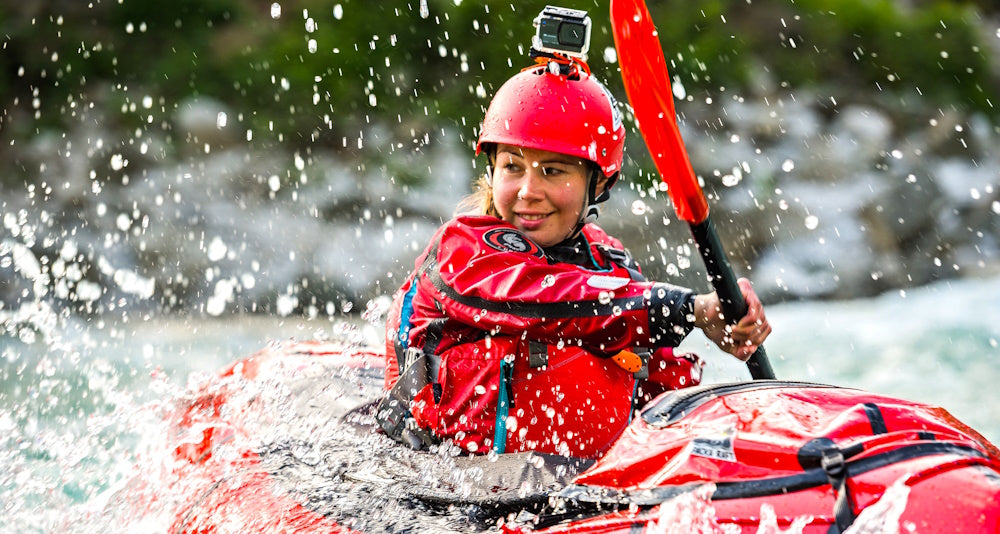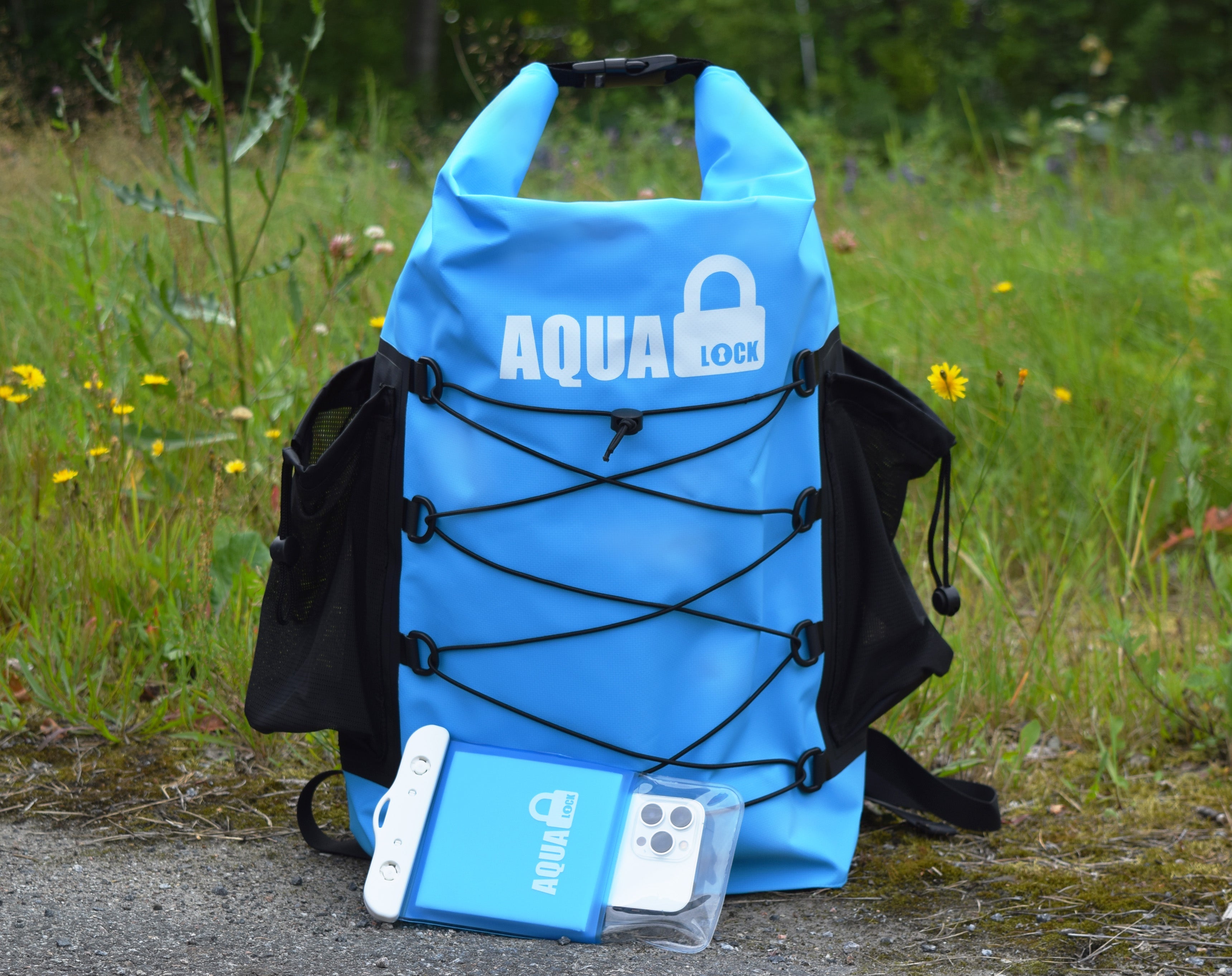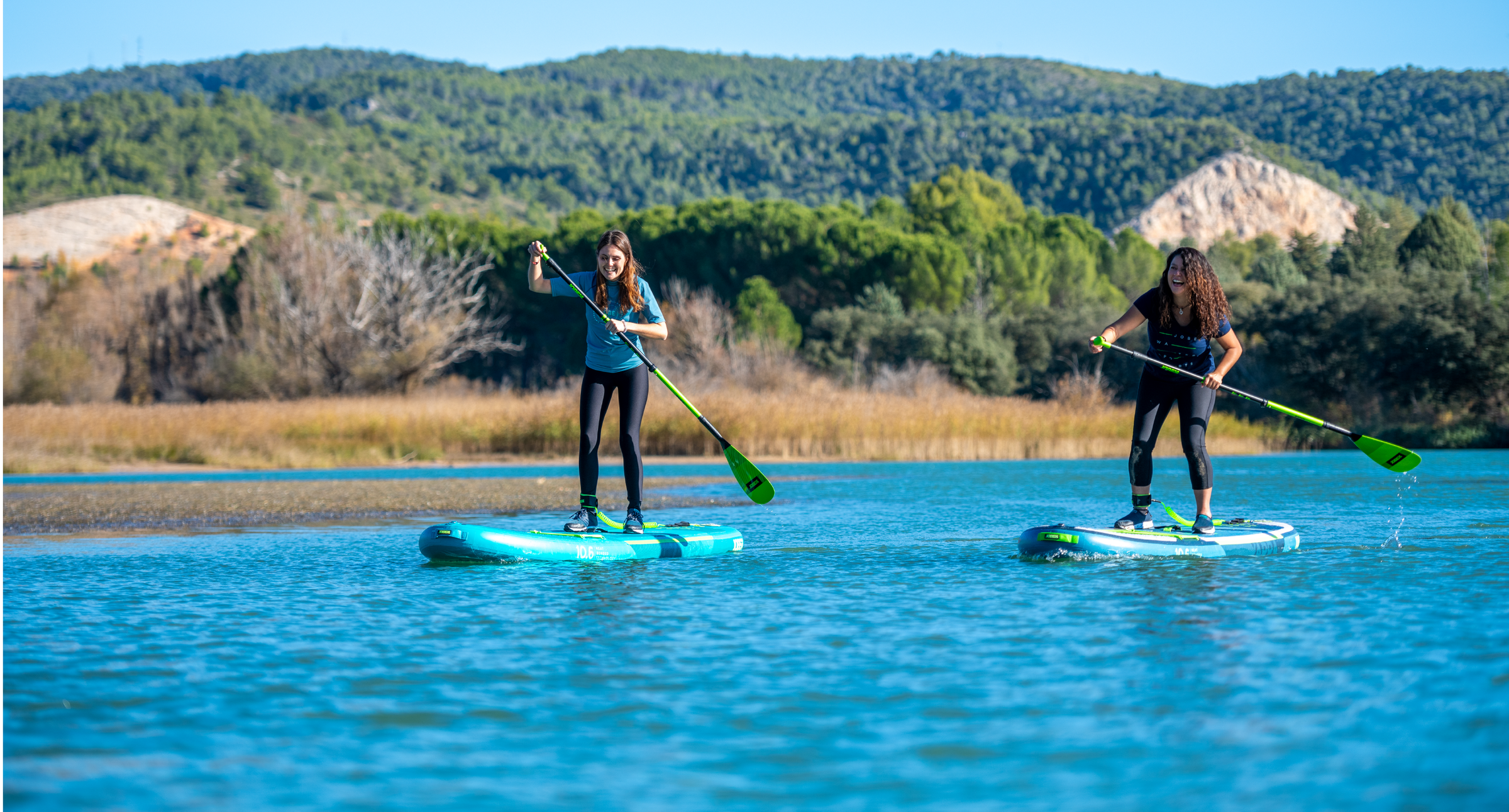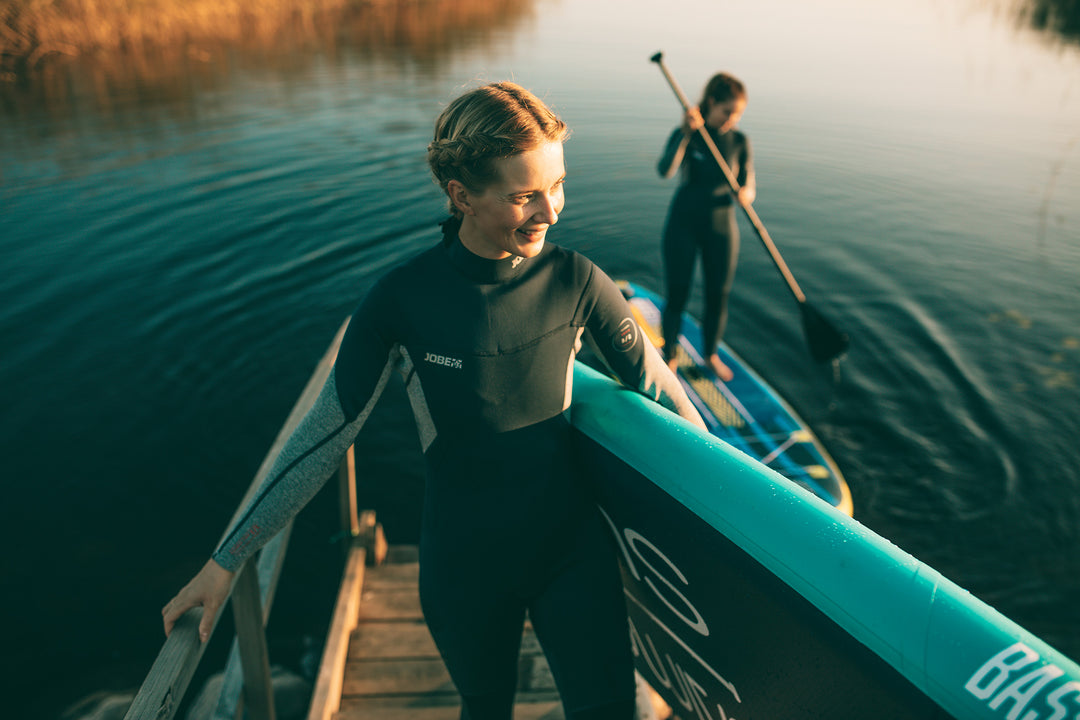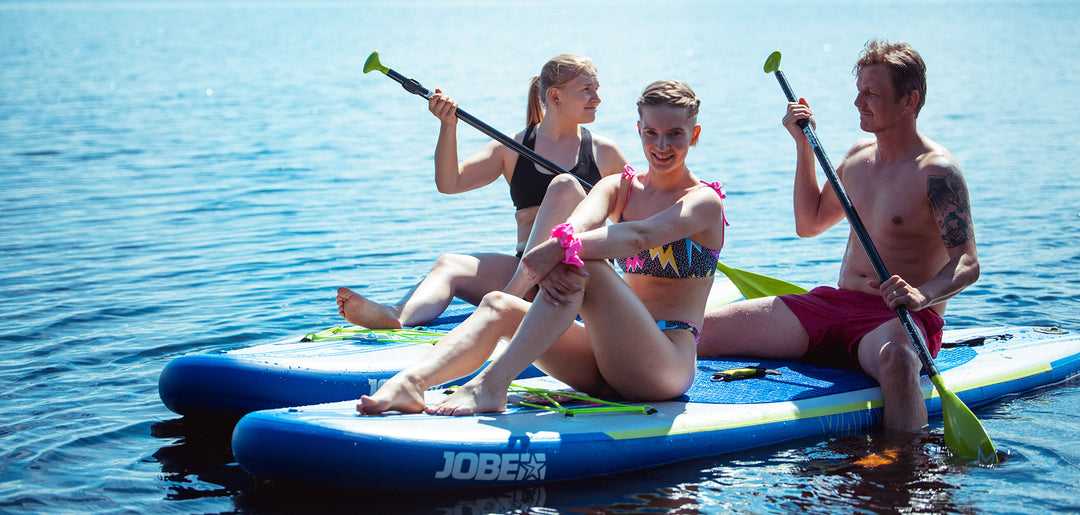different styles of paddleboarding
There are many styles of SUP paddling — you can sit comfortably on the board and take in the scenery, kneel for better balance, practice yoga, or stand upright with your back straight while admiring the world beneath the surface. In calm water, a SUP board even lets you see underwater, something few other pieces of gear can offer. Others use their boards for fitness and speed, pushing themselves to the limit on long, sweat-filled runs. Some adventurers pack their camping gear for 30 km day trips, while others wait for autumn storms to surf waves in wetsuits.
Whatever your style, it’s worth learning the proper paddling technique to improve your average speed, maintain endurance on longer routes, and turn your paddling sessions into a full-body workout.
When paddling standing up, remember: don’t rely solely on your arms. Instead, use the rotation of your torso and the strength of your legs to drive each stroke. Engaging your whole body not only gives you more power and efficiency, but also helps you conserve energy and enjoy a more balanced, holistic workout.
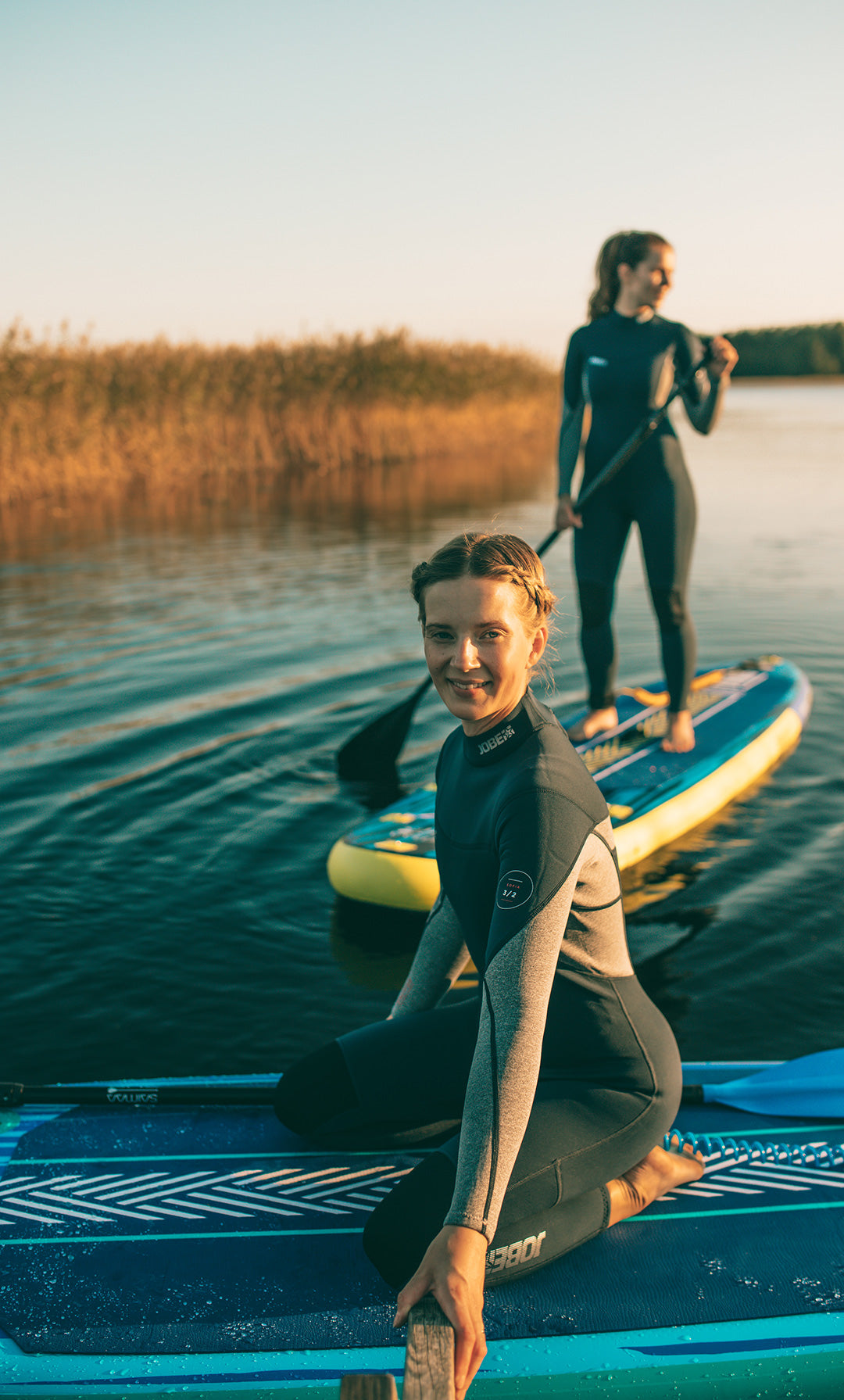
How to get onto a SUP?
To adjust your paddle length, stand upright and raise one arm above your head — the T-handle should reach your wrist. This gives you the ideal paddle length for comfortable and efficient strokes.
When getting on the board, start from your knees at the handle — the board’s balance point. Always begin paddling from your knees to avoid hitting your head on the dock, rocks, or other obstacles if you fall. Gently shift your weight from side to side to get a feel for the board’s stability and responsiveness.
Once you’re comfortable, paddle into deeper water and move carefully to a standing position. Place your feet hip-width apart, parallel to each other, on either side of the handle. Keep your knees slightly bent — just like when standing on skis — and stay relaxed rather than stiff. Practice shifting your weight from one foot to the other to understand the limits of your balance.
Whether you’re paddling upright for fitness, cruising at an easy pace, or cooling down after a workout, remember to enjoy yourself. SUP boarding is a fantastic full-body exercise — your core muscles engage constantly, and your balance improves naturally without you even noticing.
Keep your eyes on the horizon rather than staring down at the board — this helps maintain balance and posture. Most importantly, stay relaxed; tension only wastes energy and reduces your paddling efficiency.
As your skills grow, you can start learning advanced techniques such as the surf turn — lift the bow slightly by shifting your weight toward the tail and make a smooth 180° turn with one powerful stroke. (See instructional videos for visual guidance.)
How to use the paddle efficiently?
Get a wide enough grip on your SUP paddle to generate power in your strokes. Hold the T-handle with your top hand and the shaft with your lower hand. When switching paddling sides, simply reverse your hand positions — never hold the shaft with both hands at once.
Notice that the paddle blade is angled relative to the shaft. The paddle is correctly oriented when the blade tilts forward as you look down the shaft. On most paddles, the logo faces forward, which helps you quickly confirm that the paddle is the right way up.
Try to keep the paddle as vertical as possible in the water to maintain a straight course, reducing how often you need to switch sides. Start each stroke from well ahead of the board’s nose and immerse the entire blade in the water — this gives you more power and stability. Many beginners only submerge half the blade, which makes progress slower and balance less steady.
The stroke should be driven from your legs and core, not just your arms. Pull the paddle back until it reaches your heels, then lift it out for the next stroke. Your upper arms should stay nearly straight throughout the movement to maximize efficiency.
For a faster-paced session, you can shorten your paddle slightly, shift your hips back, and bend your knees more. This reduces stroke length but increases stroke frequency, helping you build speed and rhythm on the water.
